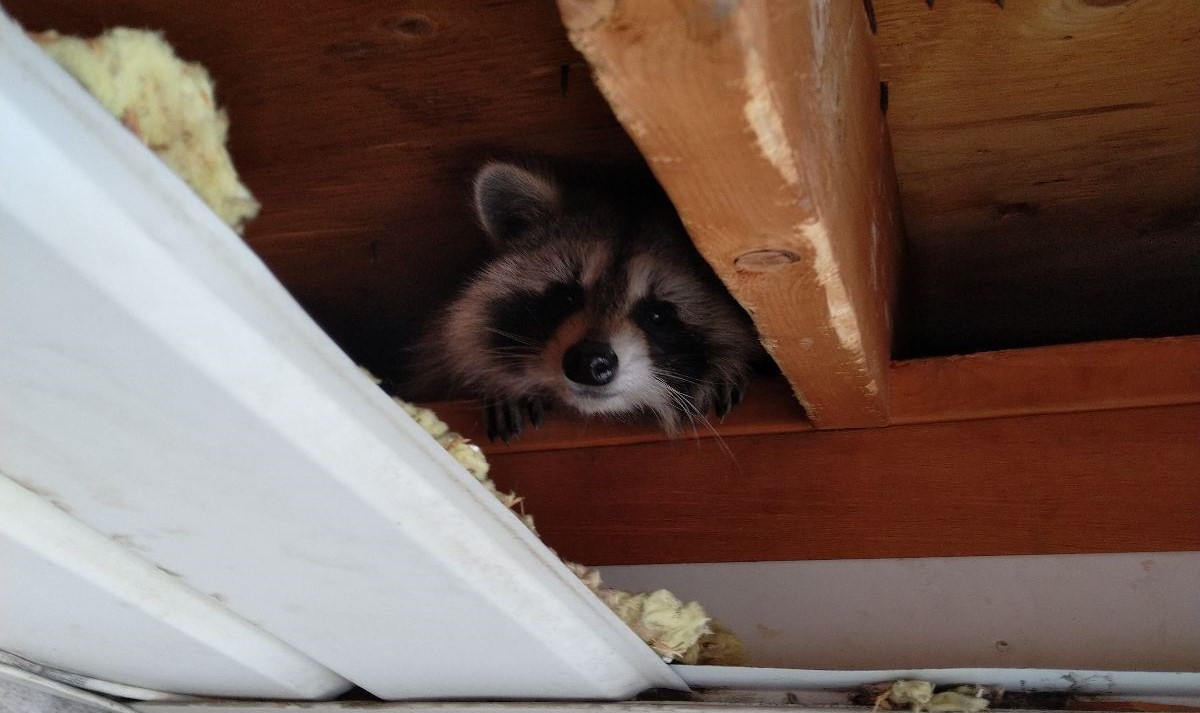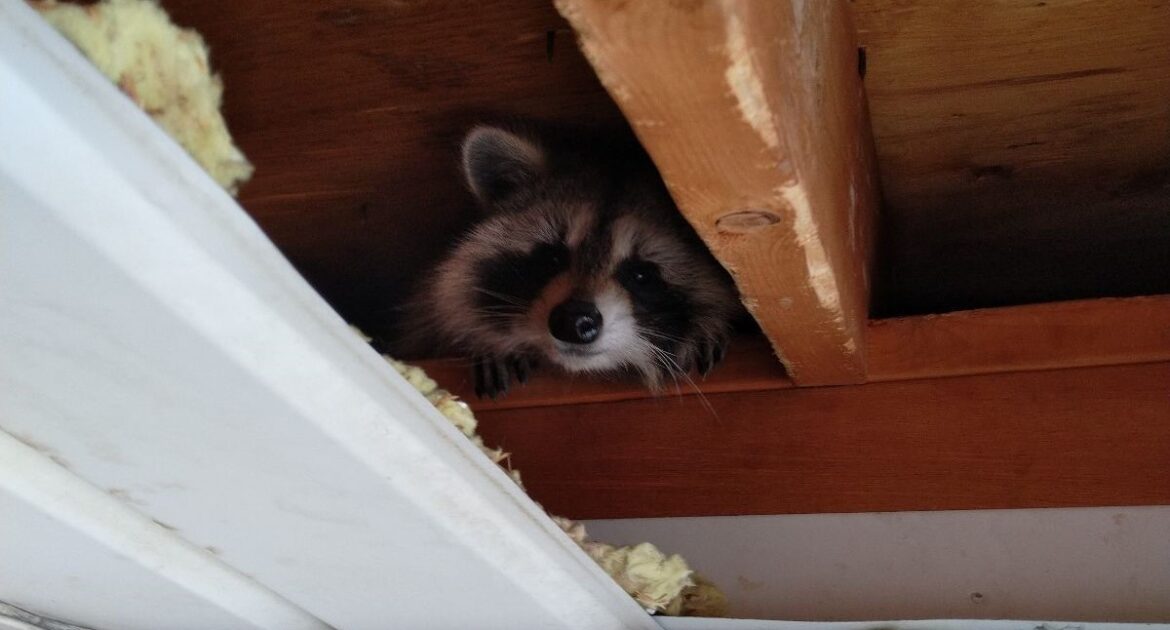Spring marks the start of birthing season for many animals, including raccoons. These curious and adaptable mammals often look for warm, sheltered spots to raise their young, which can lead them to attics, crawlspaces, or other areas of residential properties. Homeowners may notice increased raccoon activity, especially from expectant mothers searching for nesting sites. Identifying and addressing this issue early is crucial to protect your home while ensuring the humane treatment of the animals.
Recognizing signs like unusual noises or physical clues can help you detect a raccoon nest. Once identified, safe and effective removal methods should be used to resolve the problem without harm. Need help? Skedaddle Humane Wildlife Control is here to assist. Whether you’re hearing strange sounds or seeing signs of nesting, we’ll help you keep your home wildlife-free. If you’re in Gahanna, our team is ready to step in.
Signs of an Expectant Raccoon Mother on Your Property
Expectant raccoon mothers are often easy to spot if you know what to look for. They aren’t exactly discreet when prepping a spot for their babies. Here are some common signs that might indicate you’ve got one nesting on your property.
Mother raccoons and their babies can be surprisingly noisy, especially at night. Consistent chittering, growling, or chirping sounds from hidden areas like the attic or walls could indicate a raccoon family has moved in. Baby raccoons, in particular, make soft chirping sounds that resemble calls to their mother. These noises are often the first clue, serving as an important early warning to investigate further before the babies grow large enough to explore.
Raccoon moms are resourceful when selecting nesting spots, often choosing quiet, sheltered areas like attics, chimneys, or crawlspaces. Signs of nesting may include:
- Shredded insulation, drywall, or chewed wooden beams
- Scattered materials like twigs, leaves, or fabric scraps
- Entry points such as holes in eaves, torn roof shingles, or open vents
Tracks and droppings are another clear indication of raccoon activity. Their footprints typically show five distinct toes, with the rear feet appearing longer. Droppings near entry points or in areas like attics or garages also suggest their presence. Be cautious, as droppings can carry harmful bacteria—always use gloves and protective gear when inspecting.
You might also notice increased nighttime activity if raccoons are nearby. Expectant raccoon mothers are especially active at night, foraging for food to build energy before their babies arrive. Overturned trash cans, rustling sounds, or more movement in your yard are common signs. If these signs occur alongside other clues, it’s a strong indication of nesting. Paying attention to these details allows you to confirm their presence and take proper action to address the situation.
Why Raccoon Moms Seek Shelter on Your Property
Why do these animals keep choosing homes like yours for their nurseries? Simply put, your property provides the perfect combination of safety, food, and warmth.
Sheltered indoors, like attics and crawlspaces, mimic the hollows and tree cavities raccoons naturally use for nesting. These spaces shield their young from predators and harsh weather, making them highly appealing.
On top of that, unsecured trash bins, pet food left outside, or gardens filled with fresh produce may attract hungry raccoons to your yard in the first place. Once they’re comfortable with food nearby, they’re more likely to look for nesting spots close by.
Want to make your property less enticing? Start by figuring out what attracts raccoons to your house. Secure all trash bins with locking lids, bring pet food indoors overnight, and place fencing around garden areas. Minor efforts like these go a long way in keeping raccoons away.
By removing these temptations and keeping common nesting spots inaccessible, you can reduce the chances of hosting an unexpected raccoon family.
Steps to Remove Expectant Mothers Humanely
Encountering an expectant raccoon in your home can be stressful, but it’s important to handle the situation safely and humanely for both your family’s protection and the animal’s well-being. Here’s how Skedaddle takes care of it:
- Inspection and Identification: First, we conduct a thorough inspection of your property. Our team carefully examines your home for signs of an active nest, noting nesting locations, entry points, tracks, droppings, or sounds. Confirming the presence of a mother and her young is key to ensuring a safe and humane removal process.
- Using One-Way Doors: We use one-way doors to guide raccoons safely out of the nesting site. These doors allow the mother to leave but prevent her from getting back in. If babies are involved, we time the installation perfectly to ensure the mother can take her offspring with her. This approach is humane, effective, and ensures the animals aren’t harmed.
- Sealing Entry Points: Once the raccoons are out, we seal all entry points to prevent them—or any other wildlife—from coming back. Using durable materials like steel mesh or caulking, we secure holes, vents, and other weak spots to protect your home.
- Sanitization: Finally, we sanitize the affected area. Raccoon droppings and nesting materials can carry bacteria and odors that attract more wildlife. Our thorough cleanup removes these risks and leaves your home safe and fresh.
At Skedaddle, every step of our process is designed to protect your home while treating the animals with care and respect. You can rely on us to handle the situation safely and professionally from start to finish.
Protecting Your Home with a Humane Approach
Addressing expectant raccoon mothers on your property is an opportunity to secure your house while helping these animals move on safely. Ignoring the problem could lead to structural damage or health risks from droppings, but humane techniques offer solutions without harm.
If you’re seeing signs of nesting, hearing mother raccoon sounds, or are concerned about what attracts raccoons to your house, Skedaddle’s help might be the best option. Here in Gahanna, we specialize in identifying and removing expectant raccoon mothers with efficient, humane methods.
At Skedaddle Humane Wildlife Control, we believe in responsibly removing animals. If you suspect an expectant raccoon mother has taken up residence on your property, we can help. Our experts use humane techniques, such as one-way doors, to safely and effectively remove wildlife while protecting your home. Take the first step toward protecting your home by contacting us for assistance!




